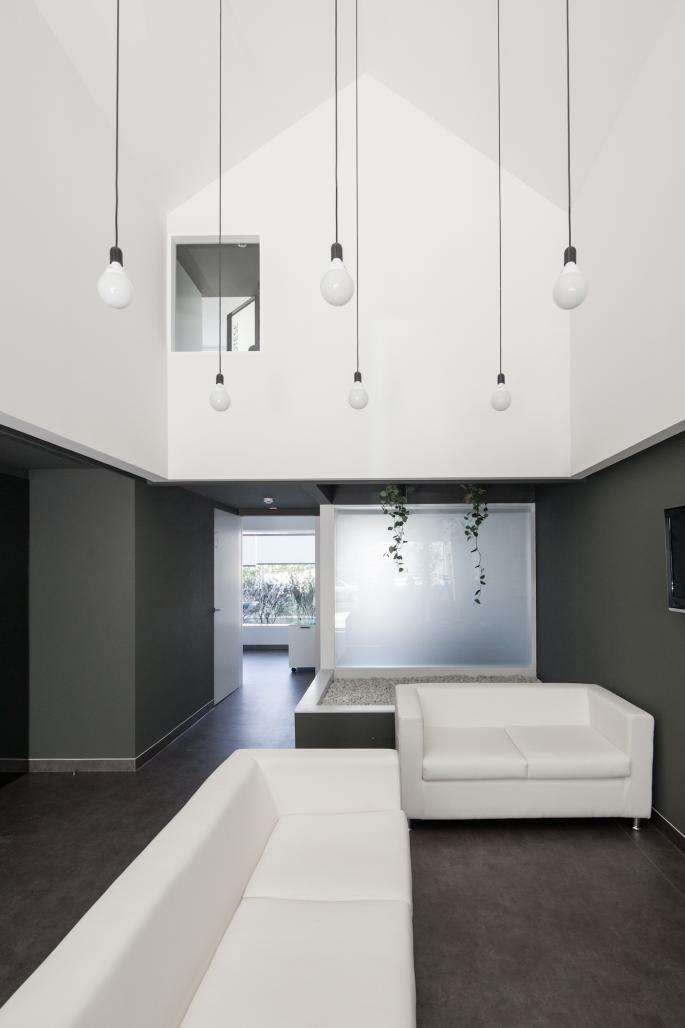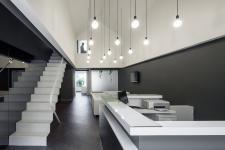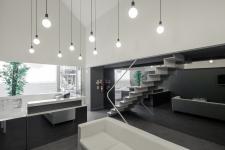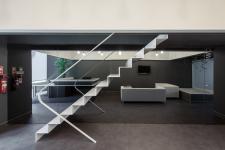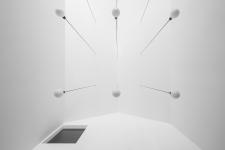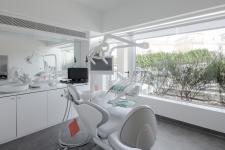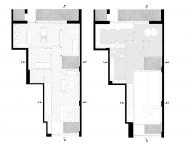Highly motivated by our personal motto US IS MORE, our main concern is to create spaces that give people the right stimuli, positively influencing their homeostatic levels. This is a concern based in the notion that we´re the product of an evolution with millions of years.
The speed imposed in the last hundred and fifty years has sent us apart of our natural evolving speed. We can no longer ignore the fact that we´re living trapped in bodies that aren´t prepared for this new ever growing reality dominated by architecture. As such, as creators of this new world, we have the obligation to adapt external space to our bodies, and not the other way around. For that, we here at the office focus on the knowledge of the human body, mainly on the response of the human brain to exterior stimuli.
We think our works as pieces of positive manipulation of the human brain.
In this project our main challenge was trying to reduce the natural anxiety that people fell when going to the dentist. For that we used three main forms of positive manipulation.
First, and under the notion that we´re equipped with a brain that evolved to guaranty survival in a savanna like reality, rather than a ever growing and ever faster urban scenario than every day imposes us millions of external inputs, plus the fact that seventy percent of that stimulus is visual, we designed a space with the minimum amount of visual stimulation. A minimal approach that will free the brain from unnecessary information helping it to enter in a more relaxed state.
Secondly, we inserted natural elements in space. An article written by Chen-yen Chang, Ping-kun Chen and published in August 2005 in HortScience journal, shows us that the presence of natural stimuli, even if in a painting or artificial plants, influences our psychophysiological response making us less nervous or anxious when in presence of this elements.
Thirdly, the use of colors. Trough all the clinic we used only two colors. A greenish grey that if in one hand gives the user a sense of sobriety filing the space with a quiet and peaceful sense, in the other hand since this color was only applied in the public areas of the clinic, helps the user to unconsciously perceive the space organization and the consequent gradations of privacy. For all the treatment and working spaces we chose to apply white as dominant color because of our natural unconscious association with cleanness.
The uncommon form, narrowness, vertical amplitude of the space and the two big glass façades placed on the main and back façade defined mainly the organization of the spaces.
The reception and waiting room it’s characterized by a big white box that floats in the air playing with the vertical amplitude of the space. The interior of the box mimetizes the idea of being under a roof, giving the user a familiar sensation of comfort, and helping I’m to calm down before the treatment. From the “roof” a series of lamps float in the air, filling the space with light. The floating box stops the excessive light and consequent heat, coming from the main facade by the end of the day, on the other hand her big mass pushes the rest of the working spaces to the back façade. This receives a great sky light, with the ideal conditions for working.
Under the stair a mirror wall creates the illusion of a broadest space solving the narrowing sensation that one could feel on entering the room.
A very thin and elegant stair guides us to a resting/waiting room on the upper floor. Where we can find a window placed at feet level, this creates a strong visual relation with the ground floor letting us have a glance at the lamps from above. From the entrance perspective the window is a very important element, because it leads the eyes of the observer into a diagonal position. This movement of the head reinforces the importance of the box ceiling, and on the other hand brakes with the enclosure of the box giving the user the real notion of the all space.
On the stomatology room the user is placed facing a vegetation curtain. The idea is to create a distraction based on the movement of the leaves so that the patient can focus on something else than the treatment itself, hopefully diminishing any unpleasant sensation caused by it.
2012
2012
Type: commission
Area: 120 m2
Architect: Paulo Merlini
